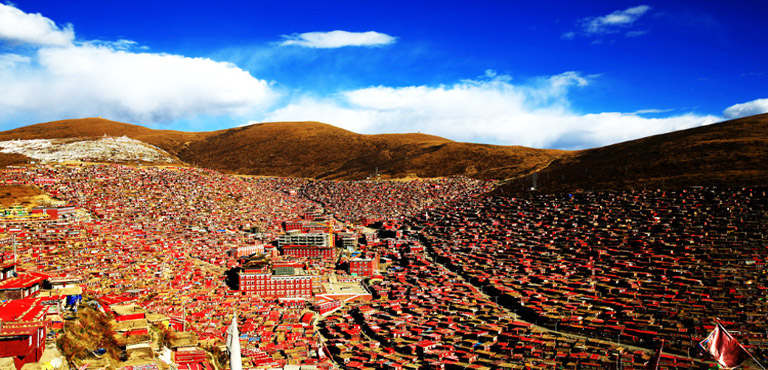
(TibetanReview.net, Oct22, 2016) – Tibet campaign groups held protests in cities around the world on Oct 19 and also issued a joint statement, calling on China to halt the destruction of residences of student monks and nuns and their expulsions in thousands at the famed Larung Gar Buddhist Academy in Serta (Chinese: Seda) County of Sichuan Province. In the USA, the Co-Chairs of the Tom Lantos Human Rights Commission wrote to the Chinese embassy in Washington, DC, expressing deep concern over the situation.
The joint statement issued on Oct 19 by some 180 Tibet groups from around the world expressed grave concern over the situation in Larung Gar, a sprawling Buddhist monastic community whose total student strength has been estimated to be anywhere from more than 10,000 to as much as 40,000. China has been demolishing residences of student monks and nuns there and expelling them in thousands since Jul 20. Its aim is to trim down the centre and reduce its student strength to a maximum of 5,000 monks and nuns by Sep 2017 while promoting a tourism complex project nearby.
The Joint statement also urged the UN High Commissioner for Human Rights to call on China to halt the ongoing demolitions and removals at Larung Gar and push for a visit to China, including unfettered access to Tibet.
In the United State, the Co-Chairs of the Tom Lantos Human Rights Commission, wrote to the Chinese Ambassador Mr Cui Tiankai, expressing deep concern over the demolition of buildings and very troubling reports of the forced eviction of at least a thousand religious adherents there and at Yachen Gar, which is part of Larung Gar.
“We strongly urge your government to reverse course, stop the demolitions and evictions, rebuild and restore the affected infrastructure, and permit all those people under Chinese jurisdiction who wish to pursue their Buddhist faith to do so without government interference or “guidance,” said the co-chairs James P McGovern and Joseph R Pitts.
They pointed out that the right to freedom of religious belief was not only recognized in the Universal Declaration of Human Rights but also under article 36 of the Chinese constitution. And the co-chairs said, “We will continue to closely monitor both the situation at these monasteries and the respect of religious freedom for the Tibetan and Chinese peoples, as this is a value deeply cherished by US citizens and institutions.”


